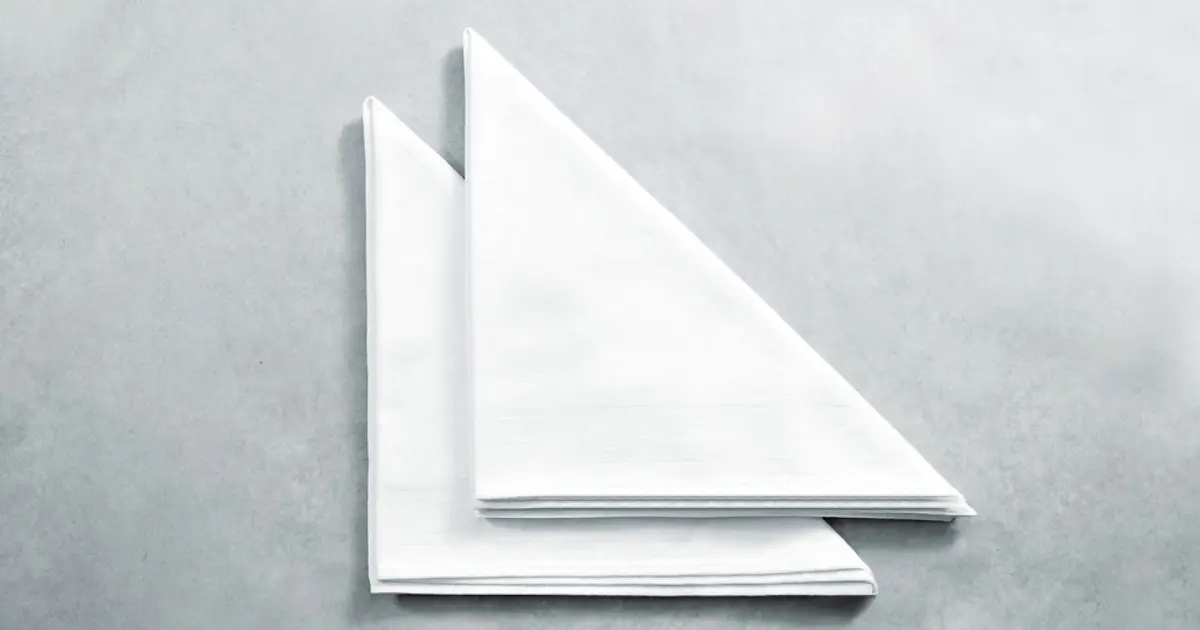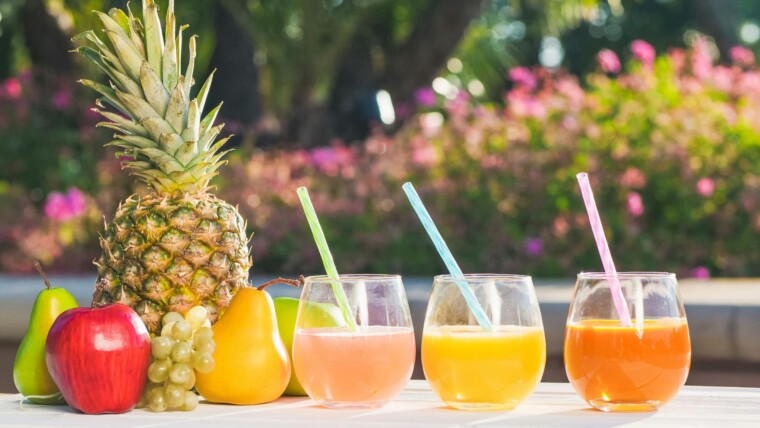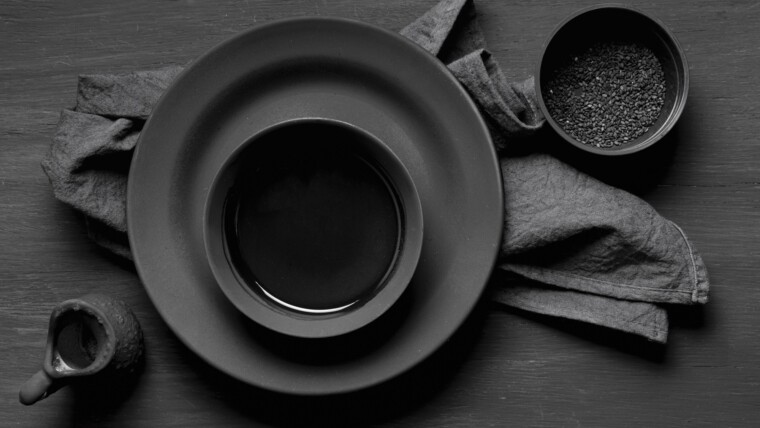Table of Contents
Restaurants have a variety of paper napkin options to choose from, each with its own benefits and drawbacks. Generally, the most popular option is tissue paper, which is thin and absorbent. However, it can sometimes be too delicate for certain tasks, such as when trying to clean up a spilled drink. In those cases, a more durable option like construction paper might be a better choice. It’s important to consider the needs of your business when selecting tissue napkins, as well as the type of clientele you cater to. In this blog post, we’ll explore the different types of paper napkins and discuss when each type is best used. We’ll also provide tips on how to select the right type of table napkin for your restaurant.
Advantages of using Paper Napkins over Cloth Napkins
- New and hygienic every time
- Inexpensive and easily available
- Bio-degradable and most eco-friendly
- Operationally convenient and multipurpose
Choosing the right Paper Napkin: Things to consider
- Type of restaurant – Is your restaurant a QSR, casual dining, fine dining, café, or takeaway? The first deciding factor while choosing a paper napkin should always be ‘What type of restaurant is it?’. This will define the type of customers that come into your restaurant and their expectations.
- Traffic – Do you have a high, medium, or low table turn rate? If you have high traffic in your restaurant then expensive tissue napkins might become a major expense item on your P&L. On the other hand, if your restaurant is a place with medium traffic and is a place where people relax, discuss and spend time while having their meal, then you should opt for a medium-quality paper napkin.
- Menu – Do you serve buffet, al-a-carte, or quick snacks. If you serve a buffet, then your customers are going to need something to clean up more often, in such a case, opt for high quality, highly absorbent, and a large paper napkin.
- Average Per Cover (APC) – If you have a very low APC, it doesn’t make sense to spend too much on a customer just for tissue napkins. Ultimately everything boils down to money.
Popular Types and Sizes of Paper Napkins
| Name | Size in Inch | Size in Cm | Ply | Restaurant Type | Napkins Per Guest |
| Beverage Napkin | 10 x 10 | 25 x 25 | 1 Ply | Bar, Café | 3 to 5 per guest |
| Snack Napkin | 12 x 12 | 30 x 30 | 1 Ply | Takeaway, Quick-service | 2 to 3 per guest |
| Luncheon Napkin | 13 x 13 | 33 x 33 | 2 Ply | Casual Dining, Buffet | 2 to 3 per guest |
| Dinner Napkin | 16 x 16 | 40 x 40 | 2 Ply | Buffet, Fine Dining | 1 to 2 per guest |
| Airlaid Napkins | 16 x 16 | 40 x 40 | 1 Ply | Fine Dining | 1 to 2 per guest |
- Beverage Napkins – These napkins are also known as cocktail napkins, and they are typically used for holding drinks, appetizers, and desserts. These table napkins are also commonly used by bars and cafes. Beverage napkins are generally single-ply and cannot be intended for prolonged use.
- Snack Napkins – Perfect for takeaways counters, quick-service restaurants, weddings, parties, and events. Unlike beverage napkins, these are slightly bigger and better in quality than beverage napkins. These are also often used inside the kitchen for quickly wiping off small spills.
- Luncheon Napkins – These are the most popular tissue napkins among casual dining restaurants and are perfect for sit-down meals or buffet service. The paper quality is much better than a beverage napkin and also its 2 ply construction makes it suitable for prolonged use.
- Dinner Napkins – These are made of the paper better in quality than luncheon napkins and also larger in size. Dinner napkins are commonly used for dinner services in casual-dine and sometimes in fine-dine restaurants. These are so good in quality that a napkin would last almost the entire dinner.
- Airlaid Napkins – These are the most premium quality and elegant-looking table napkins available which are only used by upscale fine-dine restaurants and for high-end parties. Airlaid napkins are very soft, have high absorbency, and have a linen-like feel. These are mostly of the same size as dinner napkins.
Understanding the Quality of Paper Napkins
- Paper Pulp – Pulp is used to manufacture paper, and understanding it is the first step to understanding the paper quality. In tissue paper manufacturing, three types of paper pulps are used – Virgin, Recycled, and Semi-virgin.
- Virgin Pulp – The term “100% virgin pulp” refers to pulp that has not been recycled and is made entirely from trees specifically planted for the production of paper. This type of paper is likewise thought to be of good quality.
- Recycled Pulp – The term “recycled paper” refers to paper that has been created from previously used and recovered paper and paper goods. Recycled pulp is manufactured from recycled paper that has been chemically processed to remove inks and other undesirable materials, freeing the paper fibers. The use of recycled pulp as a raw material in the production of paper is safe. Most facial tissues, toilet tissues, and newsprints, as well as many other types, include 100 percent recycled pulp.
- Semi-virgin Pulp – This is a form of pulp where the virgin pulp is mixed along with recycled pulp in order to give the paper more strength and reduce cost.
- Absorbency – Absorption capacity is a key feature of tissue papers. The amount of water absorbed by the wetted surface of the paper is measured as water absorbency. Tissue paper makers, on the whole, don’t market their tissues’ absorbency capacity. As a result, the best way to determine absorbency is to test it yourself. Keep in mind that higher absorbency does not always imply a superior quality. Absorbency varies depending on the application; for example, kitchen towels require a high level of absorbency, whereas toilet paper requires a lesser level of absorbency. The higher the absorbency, the more likely the tissue would disintegrate, resulting in higher consumption.
- Thickness – The thickness of all forms of paper is measured in Grams per Square Metre (GSM). The lower the number, the thinner the paper. GSM is a numerical scale. Tissue paper usually has a weight of 10 to 35 GSM. Greeting cards are often 250+ GSM, while office printer paper is typically 70 to 100 GSM. Better the thickness, better the absorbency, and better capacity to withstand disintegration.
- Ply – The number of layers per sheet of tissue paper is referred to as the ply. For practically all types of tissue products, 1 ply, 2 ply, 3 ply, and even 4 ply are available in the retail market. In industrial consumption, however, this is more or less standardized. Toilet paper is always two-ply, facial tissues are two-ply, multifold or M-fold towels are one-ply, kitchen towels are one-ply, and table napkins are either one-ply or two-ply. The majority of beverage, cocktail, and snack napkins are single-ply. Napkins for luncheons and dinners are always two-ply.
- Whiteness – Whiteness of tissue paper is not really a quality measure rather just an appearance measure. Whiteness only means more chemical bleaching has been done to the paper in order to achieve that whiteness and hence more environmental impact. Tissue paper doesn’t necessarily have to be white in order to be soft and absorbent.
- Embossing – Embossing plays a crucial role in the overall appeal and quality of all tissue products. Embossing is required on all napkins. It gives 1-ply napkins structural stability and 2- and 3-ply napkins tissue layers adherence. Consumers often identify unique embossed patterns and become loyal to the brand as a result. Each engraved embossing roll is a work of art that necessitates a high level of knowledge and precision artisanship. It can take more than 100 hours to produce an engraved roll, which is often done by hand.
- Increased surface area: The embossed design generates a bigger surface area, which boosts the paper product’s absorption rate.
- Enhanced texture: An embossed pattern, particularly a double-embossed pattern, gives the paper a softer feel.
- Improved Bonding: Multi-ply paper goods hold together rather than rip away thanks to the embossed pattern. An embossed paper product has a more fascinating appearance than a flat paper product in terms of aesthetic appeal.
- Comfort or softness – Comfort and softness are subjective qualities that influence how a customer perceives a product but have little practical value. Consumers tend to feel that the more the softness, the higher the quality, therefore choosing the proper level of softness to impress your guests is critical. Unfortunately, softness and strength have a well-known inverse connection. Strength diminishes as softness grows, or put another way, as strength increases, softness decreases. As a result, using an excessively soft tissue napkin to dazzle your guests is not always a good idea; it will simply increase your consumption. Based on your application, select something with the appropriate softness and strength.
Printing on Paper Napkins
It is a common practice for restaurants and cafes to print their logo on table napkins to promote brand recognition. In global markets, there are umpteen ways you can print on tissue paper, but in India, it is commonly either single color or double color.
Paper napkin is something that comes in direct contact with skin, mouth, and food surfaces, and hence it is very important that you don’t forget the health and safety of your guests above your branding urges. Here are a few tips to consider while deciding to print on table napkins.
- Use non-toxic ink – Inks come in a variety of forms these days, including solvent-based inks, water-based inks, vegetable-based inks, metallic inks, and so on. Use ink that is both lead-free and environmentally friendly. Always request required certificates from your manufacturer.
- Print only on a small area – It’s never a good idea to print the full tissue. Everyone thinks twice about wiping their face with something that has a lot of chemicals.
- Print on the edges and not on the center – the edges of the tissue are where there could be the least interaction with surfaces.
Which is better to use: Virgin or Recycled?
Fundamentally, the solution is straightforward. The Paper Calculator from the Environmental Paper Network clearly indicates that recycled paper is better for the environment than virgin paper in all paper grades. The following illustration demonstrates the environmental advantages of using recycled paper instead of virgin paper.
| 1 ton of 100% Virgin Paper | Recycled Paper | Environmental Savings | |
| No. of Trees | 24 Trees | 0 Trees | 100% |
| Energy | 33 million BTUs | 22 million BTUs | 33% |
| Greenhouse gasses released | 5,601 pounds | 3,533 Pounds | 37% |
| Wastewater | 22,853 gallons | 11,635 gallons | 49% |
| Solid waste | 1,922 pounds | 1,171 pounds | 39% |
* BTU – British thermal units, a basic measure of thermal energy.








2 Replies to Different Types of Paper Napkins for Restaurants
Thanks for this.it is really helpful
Hammed,
Thank you for your comment, I’m glad you found the article helpful! Selecting the right paper napkins is an important decision for restaurants that often gets overlooked. The type, size, quality and other factors can really impact the guest experience and operating costs. I hope this information allows you to choose the optimal napkins for your restaurant.
Best regards,
Azhar Umar
Essential Diversey Chemicals: A Guide for R1 to R9 TASKI Series
How to Respond to Guest Reviews with 10 Samples
Top OTAs in India: Complete 2024 Guide for Hoteliers
Different Types of Paper Napkins for Restaurants
Guest Reviews: The Hidden Force Behind Bookings